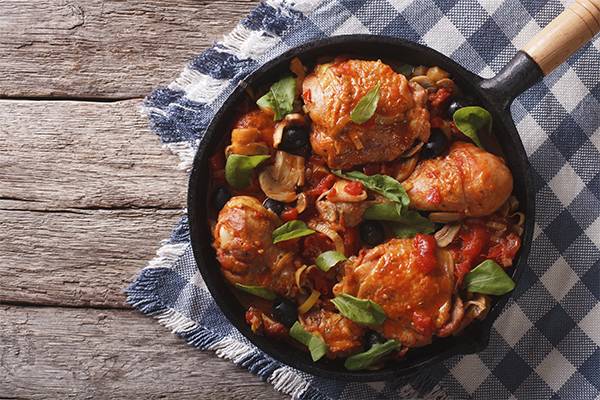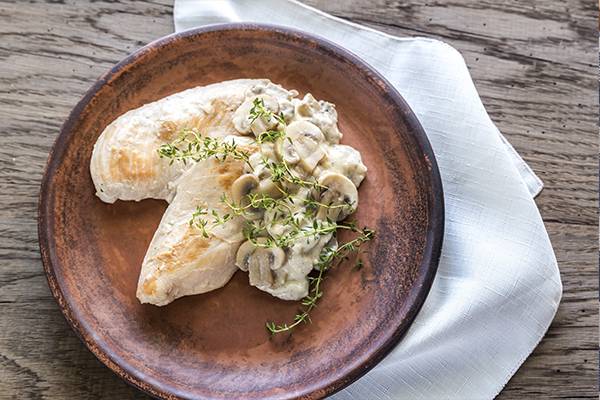What is the nutritional value of chicken?
Rich in protein, chicken is the most consumed poultry meat in Spain. We tell you the types of chicken that exist and recipes.

According to the latest data from the Ministry of Agriculture, Catalonia is the leading autonomous community for the production of poultry meat in Spain, with 28.7%, followed by the Community of Valencia, with 16.9% of the total, and third is Andalusia, with 15.8%.
If we refer to the consumption of chicken, Castilla-la Mancha, Comunidad Valenciana and Aragón are at the highest consumers, while Canarias, Cantabria and Galicia are at the lowest.
Nutritional value
Chicken meat, provided it is eaten without skin, is one of the most recommended by nutritionists because it is rich in protein, has a high biological value, and nutrients, and a low fat and cholesterol content. Its great versatility in the kitchen is accompanied by a high nutritional value, such as vitamins B1 and B2, which protect the nervous system; iron, phosphorus and magnesium, which are essential for bones, muscles and the heart; and zinc, which improves the immune system.
This type of meat provides the body with the most protein in relation to its price. In addition, there are also products made with chicken meat on the market, such as hamburgers and sausages, which due to their low fat content, are highly recommended for the meals and dinners of the 'little ones' of the family.

Types of chicken
Broiler or hatchery: it is the most consumed because its meat is soft and very abundant, especially in the thighs and breasts. The most in demand are:
Roasting Chicken.
Organic: of all the poultry meats, this is the only one that is produced organically.
Picantones: it is smaller than standard, weighing 600-700 g.
Coquelet.
Country chicken: stronger flavoured, fed on natural corn.
Capon chicken: called ‘giants', as they are castrated and just eat, so they are large and have lots of meat and flavour. They are usually eaten at Christmas, stuffed and roasted.
Pulardas: they are the female equivalent of the capons, although not so big. Great taste and fat content, perfect for broths and for stuffing.
Parts of the chicken
Breast: without skin, it is the part with the least fat and cholesterol, only 92 kcal/100 g.
Thigh and leg: less protein and three times as much fat as the breast.
Wing: provides 56 calories per 100 grams without skin and 111 calories with skin.
Giblets: with a high mineral and vitamin content, it has 5 times the fat of breast milk.
Liver: has 9 times more cholesterol than breast milk, but more iron.

Consejos de compra, conservación y cocina del pollo
- Chicken meat should be purchased at the last moment (as should fish and frozen meat) and should be transported in thermal bags.
- When choosing a chicken, the skin must be flat and smooth, Any greenish or purplish marks, or the darkened ends on the wings are signs that the chicken is not fresh.
- It should be consumed right away but, if not, it is best to freeze it. The chicken will keep well for up to 2 days in the fridge, and cooked for 3 to 4 days. It should always be in the coldest part of the fridge, at about 4ºC. In the freezer it lasts 6 to 8 months. Liver and gizzards are sold separately.
- Whether grilled or stewed, chicken meat should be well cooked to ensure that any bacteria are destroyed. But when grilling, take care not to overcook it so that it does not dry out. If there is meat left over, it can be kept well in the fridge for up to 2 days.
- To fry, ensure that the frying pan is very hot and add salt at the end when you serve it, as it absorbs the juices from the meat.
From our website to your kitchen
- Chicken in sherry with apples and raisins
- Chicken with chestnuts and mushrooms
- Chicken with lemon
- Chicken stew
- Chicken Strudel
- Tender chicken in brine with roasted lemons, honey and thyme
Find more recipes here
What do you think about?
Share comments, opinions and tricks with the Community







